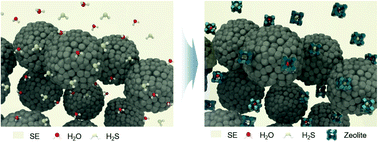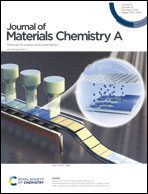Critical role of zeolites as H2S scavengers in argyrodite Li6PS5Cl solid electrolytes for all-solid-state batteries†
Abstract
All-solid-state batteries (ASSBs) with inorganic solid electrolytes (SEs) have received much attention as future energy storage systems owing to their high energy densities and excellent safety. Sulfide-based SEs are considered promising because they exhibit greater ionic conductivities and mechanical softness than oxide-based SEs. In particular, argyrodite-type Li6PS5Cl with a high ionic conductivity of 3.0 × 10−3 S cm−1 offers new possibilities for realizing high-performance ASSBs. However, contact with moisture results in the evolution of H2S from Li6PS5Cl, which has hindered the scalable fabrication and practical application of Li6PS5Cl. To avoid this issue, we propose incorporating a zeolite, which can act as a scavenger for both toxic H2S gas and moisture, as a functional additive in Li6PS5Cl. We demonstrate that zeolite-embedded Li6PS5Cl exhibits greatly improved chemical stability and reduced H2S evolution upon storage in humid air (RH 50%), leading to a noticeable improvement in the cycle performance of ASSBs. This approach could resolve the technical issues associated with sulfide-based SEs toward commercial-scale implementation.



 Please wait while we load your content...
Please wait while we load your content...